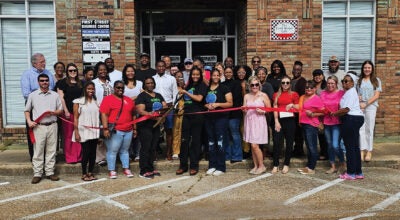Adapting to a changing workforce and customer base
Published 8:33 pm Saturday, April 30, 2016
Accommodating various generations in the workforce is a challenge today and it will get more difficult as time goes on. Marketing strategies must be developed to attract customers from the different generations. To be successful we must better understand what makes the people tick in the generations who are currently our customers and our employees. There are many differences in people, what they want, the motivations that drive their decisions, buying practices, etc. Many older people say they don’t understand the younger generation and vice versa. However, it become much clearer when we consider the environment and experiences of each group of people.
The following is a summation of the multiple audiences we serve and from whom our employees come.
1. The Silent Generation or Traditionalists – People generally born between 1925 and 1945 make up this group. The Great Depression and WW II were the most influential events that occurred during this time and had a tremendous lifelong effect. They are less likely to make impulsive decisions. They seek value for the money they spend and are loyal. Many in this group are active seniors who do not like to be regarded as old or dependent. They have money to spend but are very selective in their purchasing decisions. Most are retired and living out their golden years traveling or pursuing other interests if they can afford it until they are unable because of health.
2. Baby Boomers – People generally born between 1946 and 1964. Over 76 million consumers are living in this group. Their focus is on hard work, individualism and for some, social activism. They have a sense of community and are bargain shoppers. Many baby boomers are retired or soon will be retiring. They are re-inventing retirement and often find other work after retiring from their primary jobs. Some work for the need of additional income as many retired still in debt. Others want the social interaction and will continue to be active in civic affairs to give back to the community. Their life expectancy is longer than their parents and therefore have more years in retirement. Many will run out of money before they die. Spending time with grandchildren, traveling and volunteering are some of the ways this group remains active.
3. Generation X. – People generally born between 1965 and 1980. It is estimated there are over 65 million Americans in this group. They are earning at their highest peak and also are experiencing their highest spending years. This is a group of people who all own cell phones, regularly access social media, are users of Facebook. A theme for many is, “What’s in it for me?” There is low voter participation. Many were latch key kids and from homes with divorced parents. This is the most educated group to date.
4. Generation Y or Millennials – About 83 million strong, this group was born generally between 1981 and 1999. A Gallop poll recently reported that only 28.9 % of Millennials are engaged and enthusiastic or committed to their work. In order to make them more engaged businesses must create the right environment for them. Millennials got married later in life, or not at all. Their families are smaller than previous generations. Their focus is on work-life balance and success is defined as having a family, owning a home and taking an annual two-week vacation. Workplace changes that they will respond to involve moving from satisfaction to development; from boss to coach; from annual reviews to ongoing conversations. Millennials are changing work from paycheck to purpose.
5. Generation Z or Globals – Born generally between 1999 and 2012 they are growing up in a highly diverse environment with a tablet or PC in their hands from a very young age. They are the most technologically sophisticated generation, far surpassing the Millennials in academics with resulting accelerated achievements. They never knew life without cell phones, the Internet, live streaming, etc. They want immediate gratification. They are highly skeptical, inclined to fact-check anything and everything. They aren’t impressed with fancy titles. Collaboration is a huge part of their work style.
This generation will enter the workforce with more years of schooling on their resumes than any previous generation, on average of about 16 years. Many will have large student loan debts. They take nothing at face value. This group is tearing down the pedestals because they do not revere those in high positions. They grew up during financial crises, terrorism around the world and at home, collapse of companies thought too big to fail and the implosion of the housing market that left many homeowners in foreclosure and facing bankruptcy. They saws sports heroes fall from grace and be convicted of wrong doing.
There are differences of opinions as to the start and stop years of each generation. Those born on the border years may have attributes of the younger or older generations.
If your company has all of these groups as customers or prospects, you have a very challenging job to market successfully across the generations. If your business only markets to a specific age group it is not quite as complicated. Determine the market you are trying to serve. Study the group’s dynamics and customize your products or services to meet their needs successfully. If you are in a business who employs people in all of these age groups you really have an opportunity to recognize the contributions each group can make to your workforce but at the same time will be constantly challenged to keep them engaged and motivated. Figure out what they want and need and how it will fit into your strategic plan and help your company be successful while they individually will also experience success.
Becky Vaughn-Furlow retired from Trustmark Bank as executive vice president and human resources director. She can be contacted by emailing bvaughnfurlow@gmail.com.





